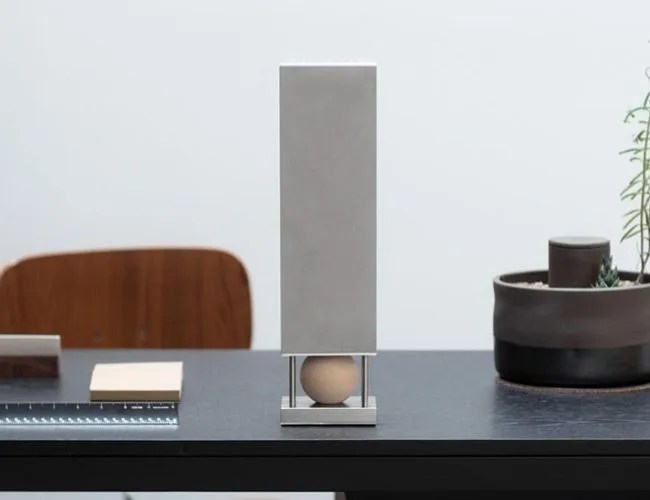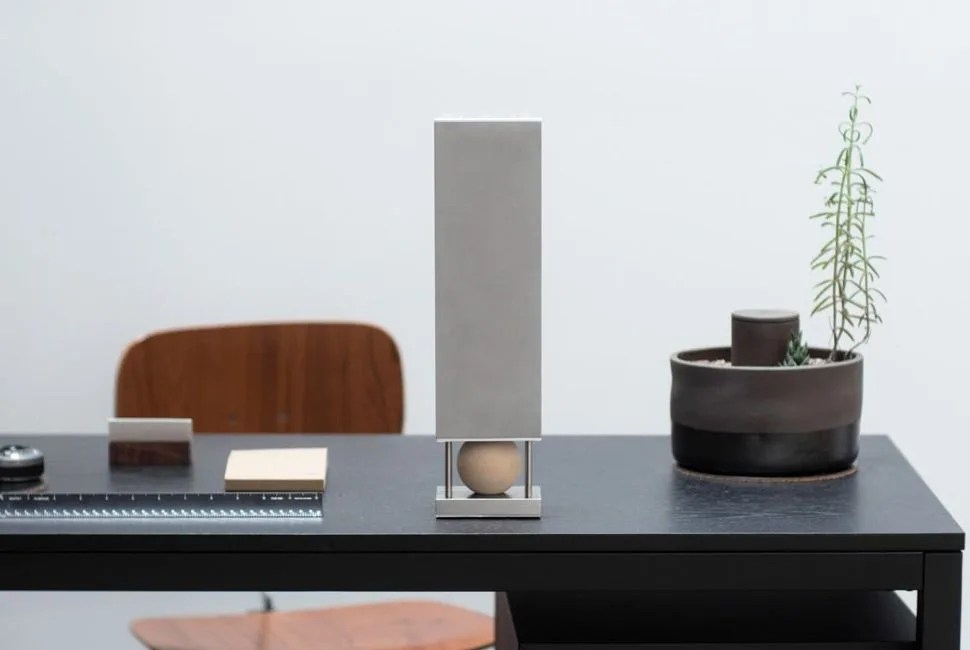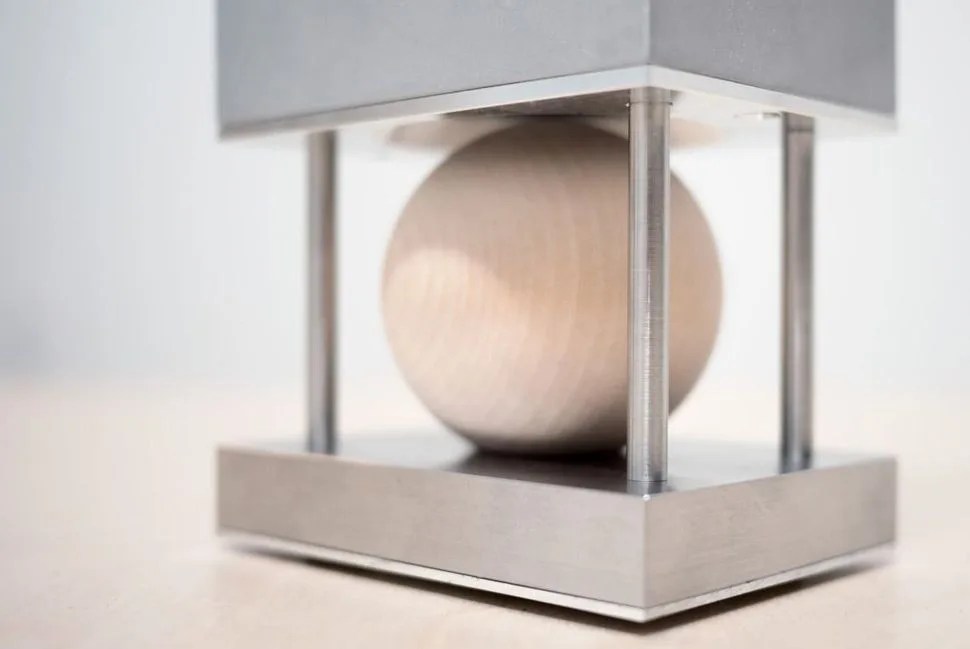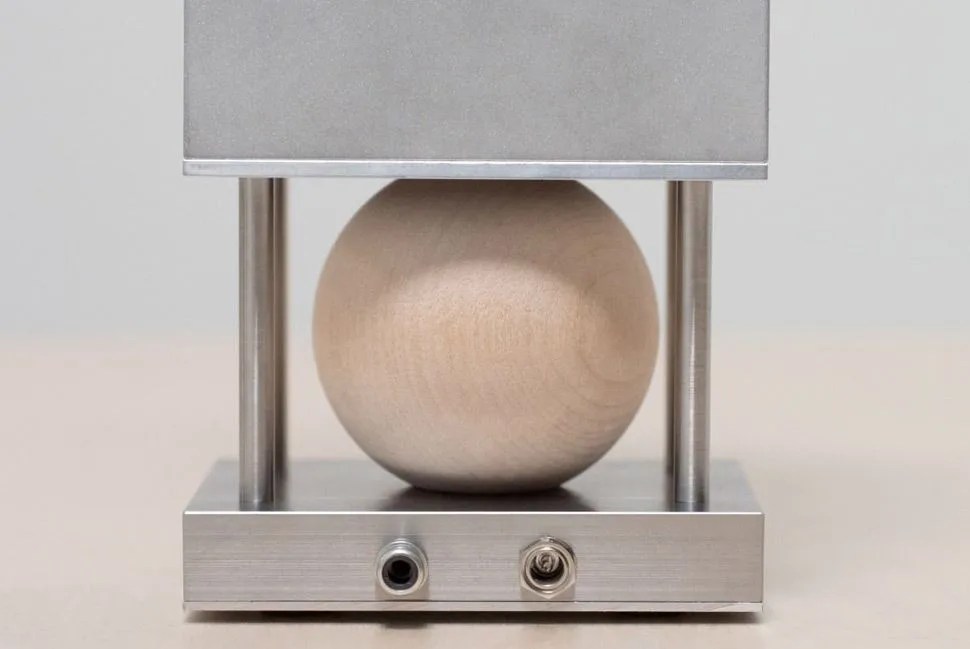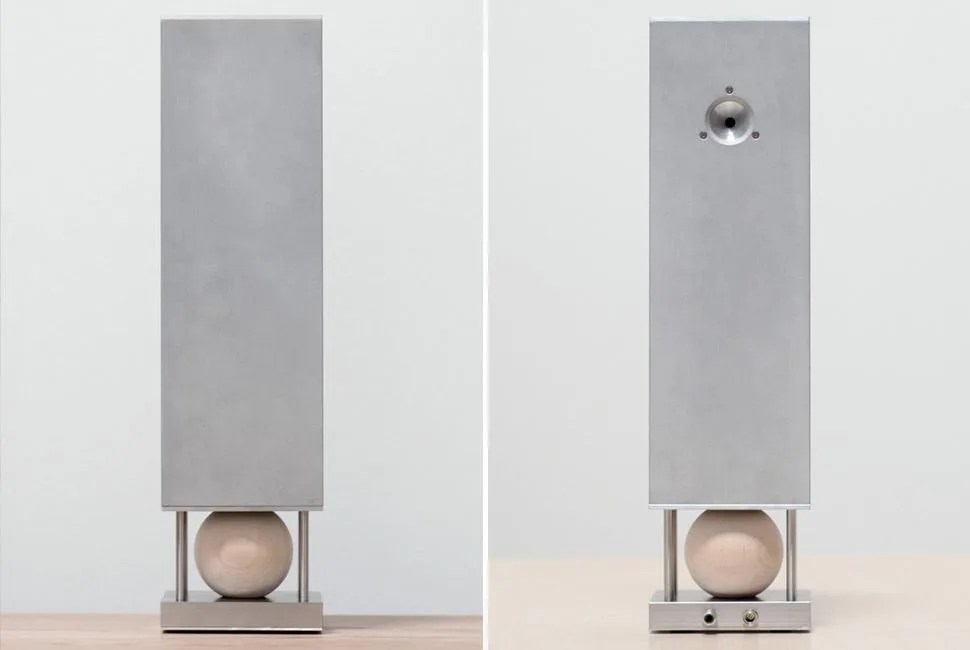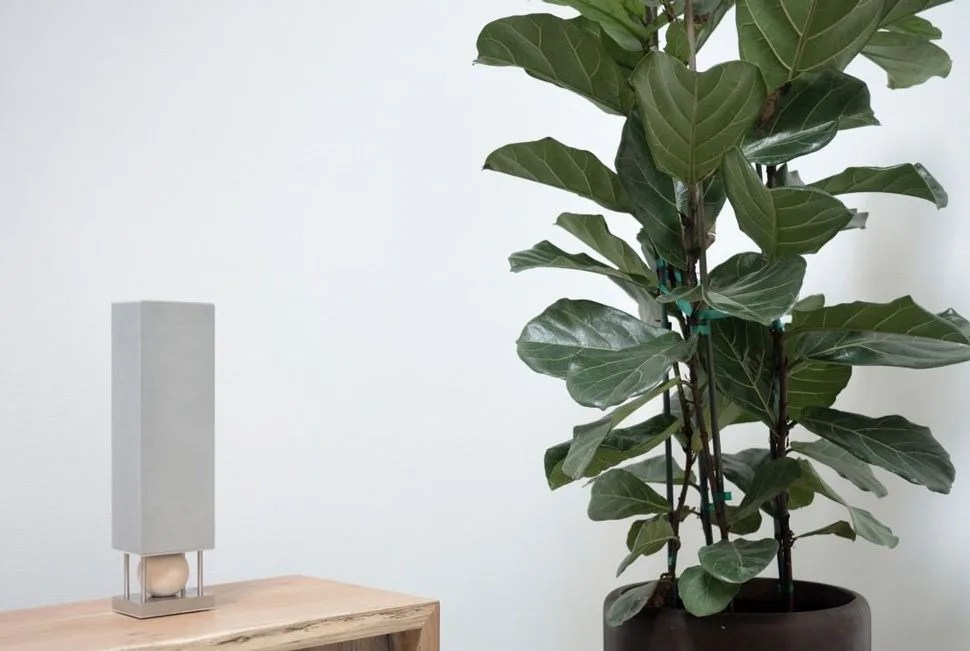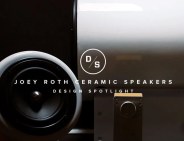5 photos
In the studio and retail space of Joey Roth, an industrial designer based in Portland, Oregon, a set of three white lean-to shelving units displays Roth’s design ingenuity, situated as it might be in the home. Along the top row is a set of shallow clay bowls and a minimalist, futuristic teapot, the Sorapot, his second best-selling item, constructed from a glass tube set between clean, stainless steel curves. Below the teapot is Roth’s self-watering planter (accompanying gardening tools sit nearby). Below that still is his best-selling and most expensive design, the one that helped put his studio on the radar of not only the design-minded, but audiophiles, too: his Ceramic Speakers.
Despite their success, taken in against the backdrop of his work, these speakers stick out like brown shoes beneath a black suit. The set is comprised of five components, including two speakers and a subwoofer, all subtle white and light cork; but connecting the set are bulking black wires that trail down to a main outlet. Roth says these wires, and the spread of five separate components, were the biggest complaints heard from his customers, who value his self-contained design style — he sometimes describes his inspiration as designs that “quietly but confidently make themselves known.” His latest product, the Steel Speaker, a wireless omnidirectional speaker made as small as possible while still delivering top-tier sound, is an effort to mollify those complaints.
It is unusual for Roth to design similar products back to back, especially considering he has no official training in the sound engineering of speakers. “I tend to jump category to category, depending on what my interests are and what I can improve,” he said. But despite this, or maybe because of it, in the four years since the Ceramic Speakers debuted he’s been quietly working to improve their design while building the new Steel Speaker. The result, Roth feels, is having finally crafted something that’s “not just aesthetics and manufacturing, but actual engineering,” while still appealing to customers that come to him for his eye, rather than his ear.
The Steel Speaker is a 12-pound vertical rectangular prism of machined steel that measures 3 x 4 x 15.5 inches, only slightly larger than a rolled-up New York Times you’d use to swat bugs. The top portion is the driver, which channels the upper spectrum of frequencies down into the diffuser, a ball of unfinished hardwood that hides a long Bluetooth antenna, while a small port in the backside discreetly emits deep base. The look is abstracted into a long rectangle interrupted briefly by delicate roundness.
But how can an industrial designer known for planters and clever, image-based motivational posters produce something that is both aesthetically pleasing and worthy of the audiophile sound test? By becoming an obsessive. Roth chose two or three goals to optimize and let the form bend to their function. As an example, one of his goals was for the speaker to be Bluetooth-compatible, with a range to rival any other device on the market. This required placing the antennae in the only part of the speaker that wouldn’t interfere with the signal: the wooden ball diffuser.
His innovations surpass simple aesthetics. Small-scale production means that he’s able to use machined steel, instead of die-cast steel poured into casts, as is common from large-scale manufacturers. And the precision detailing allows Roth to forego dampening material, used to reduce echoes, so that he can design speakers that deliver a sound specific to his personal style. Other, larger speaker companies rely heavily on computer algorithms to convert lower-quality audio files into the optimal wavelengths based on the speaker’s enclosure. Roth’s speakers compete with top-tier companies in quality for every type of file except low-quality YouTube files, where the algorithms’ benefits are most noticeable. And, in a reflection of the importance of space in his design philosophy, Roth’s speakers sound unique to the enclosure in which they are housed. His use of local materials, manufacturers and testing facilities means that the sound is unique to his Portland base. Or: the terroir of craft beer or local oysters can now be found in design.
